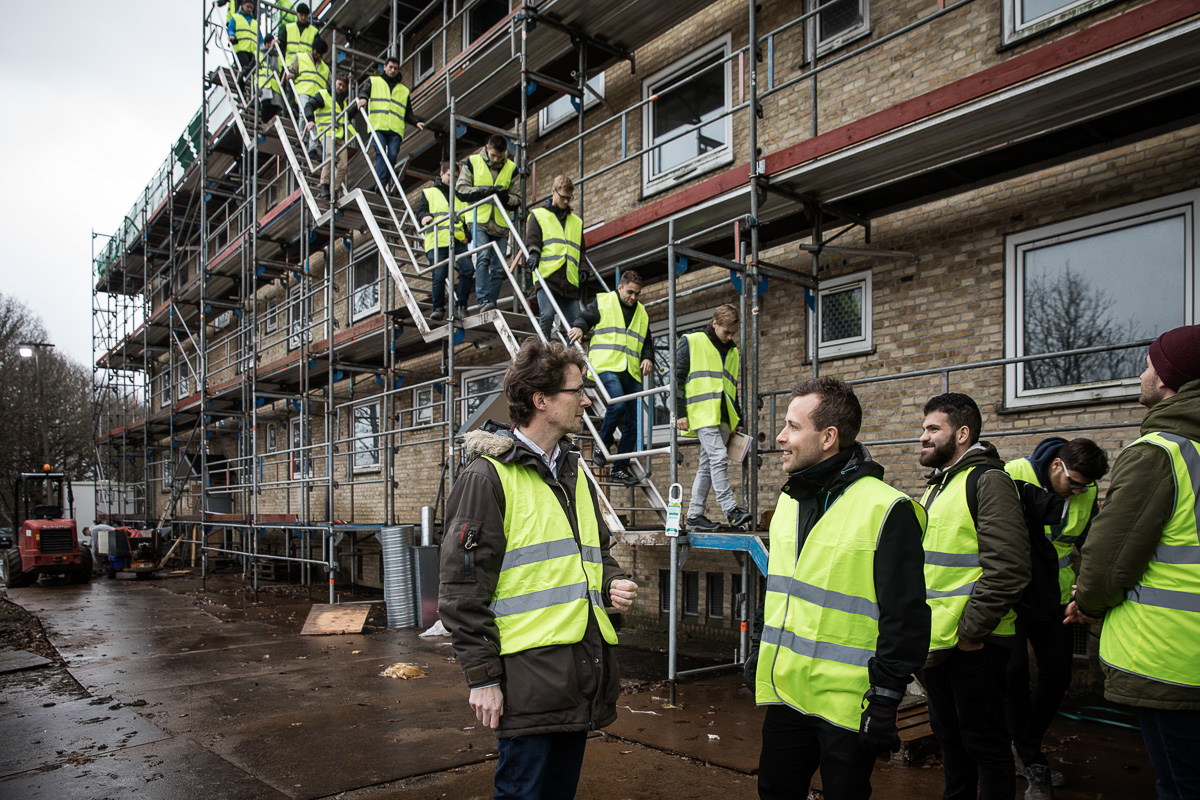
"Recommendations to the Government from the Climate Partnership for the Construction Sector" was published in March 2020, and the report states that the construction industry "must develop its mindset from just financial aspects to an overall economic/climate bottom line”.
The reason is simple, but has been overlooked for a long time: In 2016, the sector discharged approx. 3,500 tonnes of NOx and approx. 320 tonnes of PM2.5 (fine particles with a diameter measuring < 2.5 μm), corresponding to 10 per cent and 46 per cent of the total emissions from road traffic, respectively. The sector was also responsible for 2.2 per cent of total CO2 emissions in Denmark.
This was also why, back in 2019, Copenhagen and Oslo entered into a partnership on procuring climate-friendly construction plant, and in September 2020, Copenhagen reached a milestone with the first emissions-free building site for a daycare institution in Vanløse, west of Copenhagen, called Mundi.
Now, six companies (Per Aarsleff, Volvo Entreprenørmaskiner, Katzenmark, Purefi, Airlabs and Alumichem) have teamed up with the Danish Technological Institute and Aarhus University in a lighthouse project to take the next step.
The project is called the Future Green Construction Sites, and basically it will demonstrate elements of the green building site of the future through modern technological solutions in interaction with efficient logistics and intelligent behaviour.
Among other things, the project will develop a digital building-site model; a Digital Building Twin (DBT), which can model and optimise workflows via real-time sensor from construction plant:
"Our goal in the project is to trace building resources consumption and see whether we can find potential for improvement. We want to find out whether it’s possible to reduce resource consumption by looking at the energy consumption of vehicles, site huts, and other equipment and tools. Using a DBT, we can monitor all the processes in real time, model them to super-optimise the processes, and then benchmark
building sites in relation to the models," says Associate Professor Jochen Teizer from the Department of Civil and Architectural Engineering at Aarhus University, who is responsible for developing the digital twin via Building Information Modelling (BIM).
Emissions, air quality and energy consumption have not received much focus in the construction sector in the past. Today, however, there is already a wealth of technologies being used in other sectors to reduce emissions and save energy.
Professor (Docent) Søren Wandahl
The Future Green Construction Sites project will be based on these existing technologies, explains Professor Søren Wandahl from Aarhus University.
"Using the digital twin, we can simulate a building site and see how it can be optimised. The idea is to use existing technologies to deal with the problems. Initially, it's a question of looking at where the biggest emissions are, and whether there's anything we can do to reduce them," he says.
The project started on 1 January 2021 and will run until the end of 2023. The total budget for the project is DKK 27 million.

